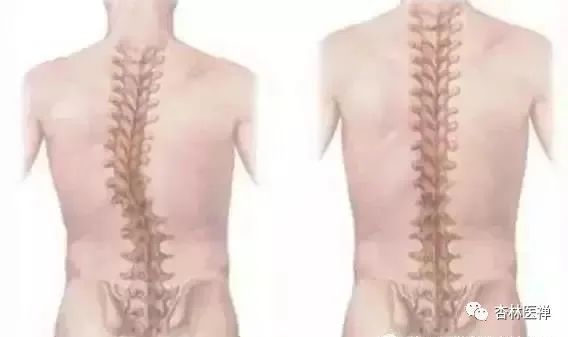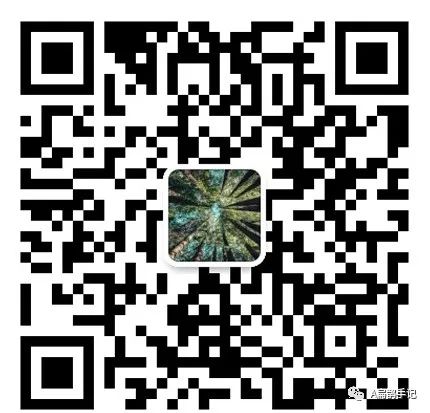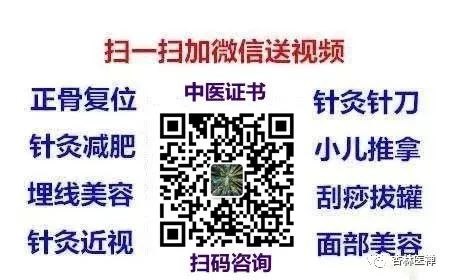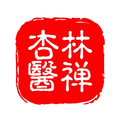

1、Holding the Chin and Supporting the Neck with Spinal Rotation Technique.
The patient sits while the practitioner positions themselves to the right. Using the right hand, the practitioner gently supports the patient’s chin, moving it up and down, forward and backward, and side to side, while the left hand stabilizes the back of the neck. The practitioner rotates gently while supporting, at an angle of 10—15°. After 1 to 3 rotations, a sudden pull to the left (or right) is performed. Note: It is advisable to first use the Zhang’s Four-Finger Zen Massage Qigong method to relax before proceeding with the spinal adjustment techniques.
2、Chin Support and Spinal Rotation Technique.
The patient sits while the practitioner positions themselves to the left. The left hand supports the patient’s chin, while the right thumb supports the hairline at the back of the neck, lifting and rotating to the left or right, or pushing upward for correction.
3、Shoulder and Arm Hugging with Chin Adjustment Technique.
The patient sits, hugging their forearms. The practitioner positions themselves to the left, pulling the patient’s forearm with the left hand while using the right hand to support the chin to the left. A gentle rocking motion is performed side to side, followed by a sudden twist to the right, which may produce a “crack” sound.
4、Cheek Support and Chin Pulling Neck Adjustment Technique.
The practitioner uses the right hand to support the patient’s cheek and chin from below, while the left hand stabilizes the neck to the right. A gentle rocking motion is performed 2 to 3 times, followed by a forceful push to the right until resistance is met, which may produce a “crack” sound. If necessary, a cheek flexion and diagonal pull technique can also be applied.
5、Chin Support and Neck Adjustment Technique.
The practitioner uses both hands to support the patient’s chin on either side of the face, gently lifting upward, then rocking side to side, followed by a forceful push to the right, which may produce a “crack” sound.
6、Occipital Support and Chin Rotation Neck Adjustment Technique.
The practitioner supports the back of the head with the right hand and the chin with the left hand, pulling backward while rotating equally to the left and right 2 to 3 times, followed by a gentle twist to the right. Clinically, different neck adjustment techniques can be applied based on the patient’s condition, including forward lifting, forward bending, lateral lifting, lateral bending, diagonal bending, diagonal lifting, backward bending, and hyperextension.
7、Elbow Bend Chin Support Neck Adjustment Technique.
The practitioner bends their left arm to support the chin while the right hand gently lifts the neck upward, rocking side to side 2 to 3 times, followed by a gentle push to the left for cervical correction.
8、Chin Pulling Shoulder and Neck Adjustment Technique.
The practitioner positions themselves behind the patient, using the left hand to support and pull the chin to the left while simultaneously pushing the left shoulder with the right hand, which may produce a repositioning sound.
9、Wide Cloth Pulling Neck Adjustment Technique.
The patient lies supine, and the practitioner uses a treatment cloth as wide as their hand to support the cervical spine, performing left and right, up and down rotations, which may produce a repositioning sound.
10、Neck Hugging and Leg Clamping Spinal Adjustment Technique.
The patient sits, hugging their neck with both hands. The practitioner positions themselves to the right, clamping the patient’s right leg with their own, using the right hand to pull the left upper arm while rotating to the right, and the left hand to push the right upper arm while twisting 1 to 3 times.
Receive: Shi Xue Min’s Awakening the Brain Acupuncture Full Video Set
Long press to recognize the QR code below,to receive for free▼▼▼

11、Shoulder Hugging and Leg Clamping Spinal Adjustment Technique.
The patient sits, hugging their shoulders with both hands, or resting their hands naturally at their sides, or hugging their head. The practitioner positions themselves in front, holding both shoulders, pushing and rotating to the left (or right) while assisting with one (or both) legs.
The patient lies supine, with the left hand holding the right forearm while the practitioner positions themselves to the right, holding the right wrist with the right hand, and the left hand passing under the right forearm to grasp it from above, applying pressure with the right elbow to lift the head forward, then backward while assisting with chest extension.
12、Arm Wrapping and Spinal Pressure Technique.
Both hands hug the neck, coordinating forward bending and backward arching. The practitioner uses the left elbow to pass through the right arm, applying pressure to both elbows and forearms while pushing down with the right palm between T 3—10, applying downward force and pushing forward, which may produce a repositioning sound.
13、Elbow Hugging and Wrist Pushing Spinal Technique.
The patient sits with both hands crossed in front of the chest, or fists placed at the chest, or supporting the chin. The practitioner positions themselves behind, supporting both elbows or wrists, applying slight backward force; pulling and pushing, then lifting and shaking, with the practitioner assisting by pushing forward with their upper chest.
14、Underarm Hugging and Chest Pushing Spinal Technique.
The patient is in front, while the practitioner stands behind, reaching both hands from behind to hug the upper chest, lifting upward and shaking the lower limbs 1 to 3 times.
15、Arm Pulling Against the Spine Technique.
The patient sits while the practitioner stands behind, holding and pulling both upper arms or forearms, performing gentle side-to-side and forward-backward movements; simultaneously, the right knee presses against the spine (the area of discomfort), performing pushing and pulling movements 1 to 3 times.
16、Shoulder and Arm Grasping with Spinal Vibration Technique.
The patient stands while the practitioner positions themselves to the left, reaching under the left armpit to grasp the right arm, while the patient holds their right forearm. The practitioner uses the left hand to grasp the left wrist, pressing the right hip against the lumbar region, performing upward and downward vibrations, shaking, lifting, and throwing 1 to 3 times.
17、Neck Hugging and Arm Grasping with Spinal Pulling Technique.
The patient sits, hugging their neck with both hands. The practitioner stands behind, reaching under both armpits to grasp both forearms, pulling backward and shaking 1 to 3 times. Meanwhile, the practitioner places their left foot on a stool to press against the thoracic or lumbar area of discomfort.
18、Hand and Arm Grasping with Spinal Shaking Technique.
The patient sits with both hands in fists at the upper chest. The practitioner stands to the right, grasping the patient’s fists or hugging both elbows, using the left arm to press against the waist or the right hip. This is known as the seated lateral back spinal adjustment technique.
19、Arm Passing and Shoulder Pushing with Waist Adjustment Technique.
The patient lies on their left side, while the practitioner stands to the left, using the right palm to pass through the upper right elbow, placing it on the area of discomfort in the waist, applying outward pressure with the right forearm, while the left hand also presses on the painful area, using the left elbow to push the left arm inward for adjustment.
20、Pushing and Pulling Spinal Adjustment Technique.
The patient lies on their right side, while the practitioner uses the left hand to push and pull the lumbar and left hip area; the right hand pulls the left leg, then upward or symmetrically pushes and squeezes.
21、Neck Hugging and Spinal Pulling Technique.
The patient sits, hugging their neck with both hands. The practitioner stands behind, holding both elbows while placing the right foot on a stool or platform, pressing against the thoracic or lumbar area of discomfort, with an assistant in front using both hands to encircle the waist, pulling 1 to 3 times.
22、Knee Hugging and Spinal Pressure Technique.
The patient lies supine, while the practitioner stands to the left, applying pressure to the knees to flex both hips as much as possible, then pushing down to the left or right side, applying pressure 1 to 3 times. Alternatively, the practitioner can use the left or right hand to support the buttocks while pushing upward, squeezing while supporting 1 to 3 times.
23、Elbow Pushing and Waist Adjustment Technique.
The patient lies on their right side, while the practitioner stands to the right, holding the left forearm, using the right elbow to hug, press, and push the waist and sacral area, while the left hand presses on the left shoulder, applying outward pressure.
24、Arm Hugging and Hip Pressing Spinal Adjustment Technique.
The patient sits, hugging both shoulders, while an assistant in front presses on both hip bones. The practitioner stands behind, holding both forearms or shoulders, pulling backward until the angle reaches 30°—45°, shaking 1 to 3 times, then suddenly twisting to the left or right until reaching 60°—90°, which may produce a “crack” sound.
25、Towel Lifting and Neck Stretching Technique.
The patient lies supine, while the practitioner stands at the head, supporting the lower jaw with the right hand and the neck with the left hand, performing gentle pulling and stretching, while assistants A and B are positioned on either side, assisting with the towel lifting technique.
26、Body Lifting and Waist Stabilizing with Leg Shaking Spinal Adjustment Technique.
The patient sits with both hands on the chest and abdomen. The practitioner stands behind, stabilizing the head and upper body while gradually leaning backward to a near-horizontal position, while assistant B stabilizes the waist and hips, and assistant A holds both ankles to maintain stability. The practitioner performs small amplitude shaking movements up and down or side to side 1 to 3 times.
27、Hip Pressing and Armpit Pulling Spinal Adjustment Technique.
The patient sits, with assistant A in front pressing on both outer sides of the hips, pulling backward. Assistant B is on the left, supporting the left shoulder and armpit upward, while assistant C is on the right, doing the same. While lifting, shaking, and tilting, the practitioner stands behind, gently pulling backward, or in front, with assistant using the right knee to press against the lumbar area, or the practitioner using their head to press against the painful area, pushing forward while pulling backward.
This method is primarily used to treat cervical, thoracic, lumbar, and sacral disorders and related conditions, such as cervical and lumbar disc herniation, spinal hypertrophy and degenerative stenosis, mild fracture sequelae, hidden spinal fissures, as well as women’s and men’s health issues.
According to the “Suwen: Bone Hollow Chapter”, “the disease of the Governor Vessel is treated at the bone.” The “Suwen: Regulating Menstruation Chapter” states, “the disease is in the tendons,” and “regulating the tendons.” “Treating the bones” and “regulating the bones” are the treatment principles of this article.
The techniques introduced in this article are major techniques for spinal disorder massage and manipulation; however, individuals with weak constitutions, multiple diseases, especially those with hypertension, heart disease, brain disease, dizziness, as well as spinal ankylosis, joint deformities, and fractures should not apply these techniques, and they may even be contraindicated.


